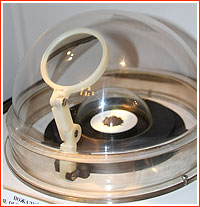On August 22, 1976, a Soviet robotic sample-return spacecraft landed on the surface of the Moon. As of this writing this is the most recent time that a human-built craft landed on the Moon, and you can read more about it here:
Luna 24
Luna 24 was the last in a long, distinguished, and problematic series of missions for the Soviet Union. The missions saw the far side of the Moon, touched its surface, and landed gently there for the first time. The early Luna program was a source of tremendous pride and achievement for Soviet science despite the frequent failures, but later it became clear that the Soviet space program would be unable to compete with NASA's effort to send astronauts to the Moon by the end of the decade. Since no cosmonauts would be going there anytime soon, a program of robotic rovers and sample return missions was launched in the late-1960s and early '70s.
Like the early Luna probes, most of these larger and more sophisticated landers failed. The Soviets knew their trade better in 1976 than they did in 1959, but there's a lot more that can go wrong when the mission entails collecting a sample and sending it back to Earth rather than simply crashing into the Moon. To be sure, shipping 170 grams of lunar regolith to Siberia is an impressive achievement, but the scientific return of the late Luna missions was dwarfed by the hundreds of kilograms of carefully-picked rocks imported by astronauts during the Apollo program. Fortunately the Apollo haul has been quite a lot to work with, since there have been no trips to the lunar surface, even robotic ones, since the last of the Lunas.
With luck, that will soon change. Earlier today the China National Space Administration launched Chang'e 3, a solar-powered robotic rover toward Sinus Iridum. If successful, it will be the first time China's landed a spacecraft on another world, and the first time any nation has done so on the Moon in 37 years. It's about time.

No comments:
Post a Comment